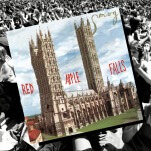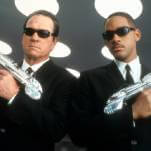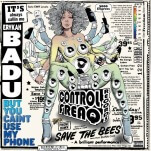Let's explore the pros and cons of cutting long books in half for convenience

In an age of constant technological advancement, the book has managed to remain exactly as it’s always been. Despite the availability of eReaders and the fact that we can scroll through long articles or digitized novels on our phones, the book itself, as a physical object, hasn’t really been improved upon or rethought. It remains what it is: A stack of paper, sequentially arranged and bound between covers. We all seem to collectively agree that it works perfectly fine as an object. As a species, we’re basically all okay with leaving books alone instead of trying to alter them into a more perfect form.
As of today, that has all changed.
A tweet and photo posted by Alex Christofi proudly displays copies of Infinite Jest, Middlesex, and a giant Dostoevsky biography cut into two and stitched back together with tape and paper. “Yesterday my colleague called me a ‘book murderer’ because I cut long books in half to make them more portable,” Christofi’s caption explains. “Does anyone else do this? Is it just me?”
Predictably, the internet very much wanted to chime in on whether or not it’s just Christofi who finds this unorthodox solution to tired wrists acceptable. Many, surprisingly, were in favor of carving up a book in order to make it easier to carry around and read. The main argument is that doing so encourages actually reading the biggest suckers instead of leaving them to languish on the shelf because getting to them seems like a pain in the ass.








































